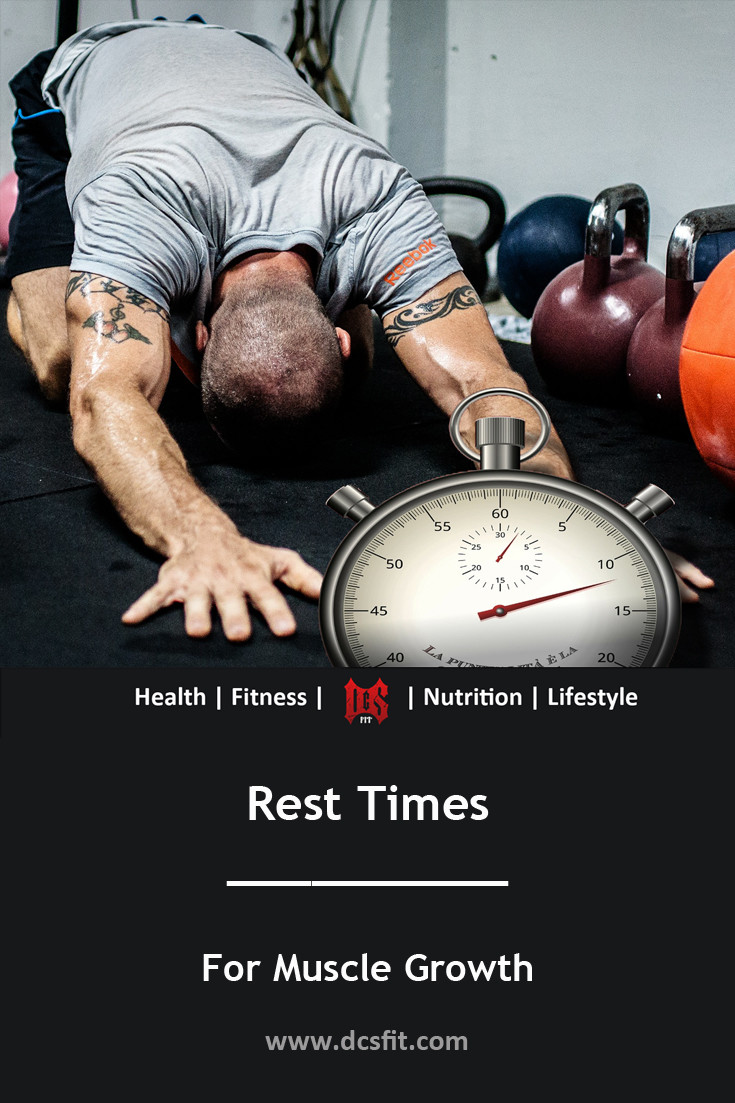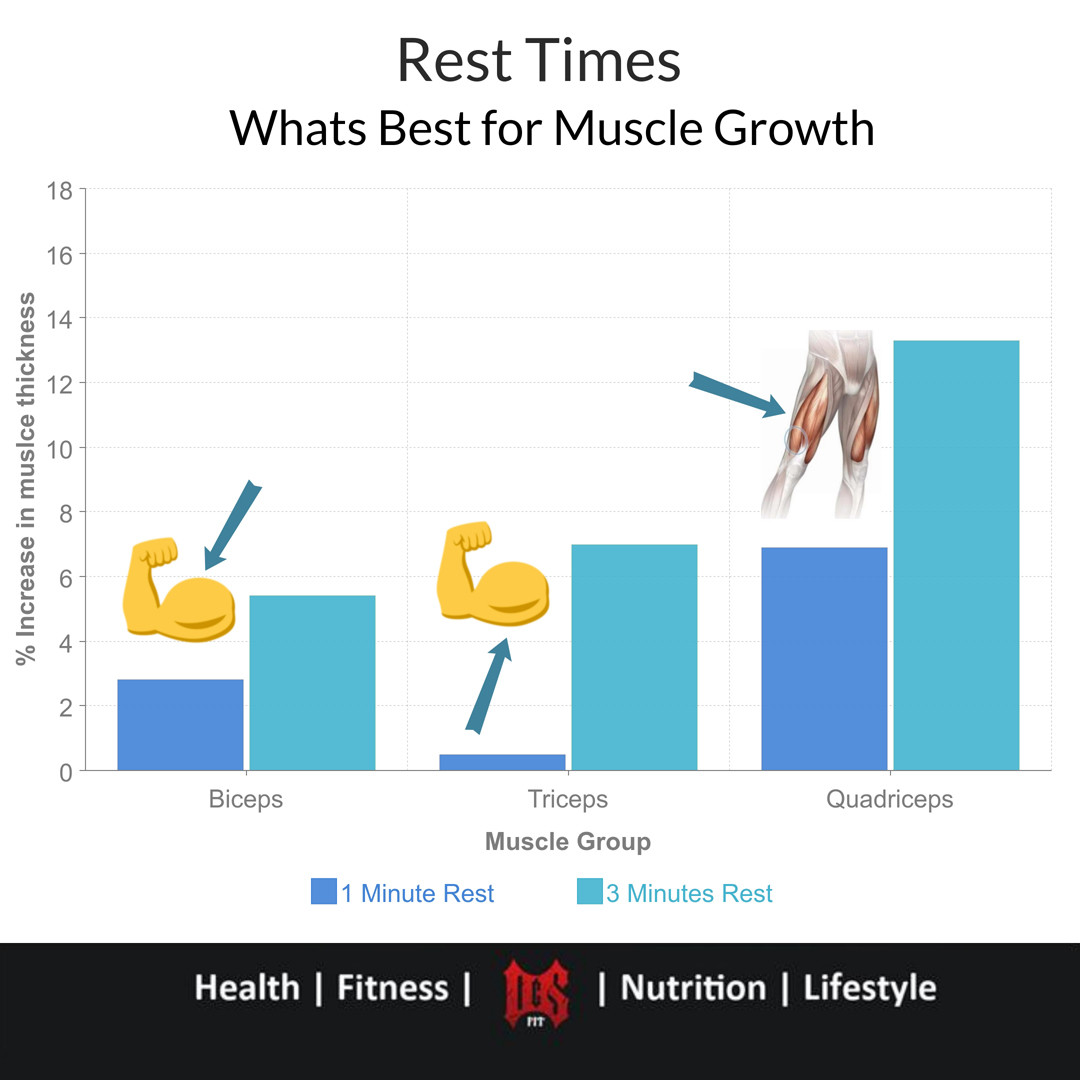REST TIMES & MUSCLE GROWTH
Are you rushing through your workouts, going exercise to exercise quick as you can? You might want to slow down and think about how taking adequate rest times could benefit your workouts and help you get more out of your hard work.
What are rest times?
Well as the name implies it’s the time you spend resting in between exercises.
What are their purpose?
Is it just to break up your sets, so you can grab a drink of water and talk to your friends? No, their purpose is to allow your muscles to recover so you can keep performing sets at the intensity you need.
Now what tends to happen is that when doing bigger compound movements like the deadlift or squat people naturally wait longer between sets as these exercises use a lot of different muscle groups and a hard set can leave you feeling quite drained.
However, when it comes to isolation exercises they maybe stop for 30 seconds and then keep right on going as they feel fine after this.
Also, we commonly see recommendations for rest times as being longer when training for strength vs training to grow muscle.
The usual rest time suggested when training to build muscle is from 30 seconds up to a minute and a half. Now on these smaller exercises you might not feel completely shot and you might feel ok after a short break.
Why then think about rest times when you feel fine after a few seconds?
Let’s assume that you are training to build muscle (if you’re after a conditioning effect that’s a different topic and shorter rest times can certainly have their place).
If the object is to grow muscle you want to get the most out of every ounce of effort you put in to lifting those weights and as it turns out short rest times are not optimal for gaining muscle.
We can look to a particularly informative study published in the Journal of Strength and Conditioning comparing short versus long rest times and their effect on both muscle size and muscle strength.
They took two groups and had them complete 3 total body workouts a week for 8 weeks.
Half completed the workouts taking 1 minute of rest.
The others completed theirs with 3 minutes of rest between sets.
Both did 7 exercises per session and had their strength in the bench press and squat tested.
Also, their muscle thickness in the biceps, triceps and quadriceps was measured before during and after the study.
The results showed that the group who had 3 minutes of rest saw significantly greater increases in their strength on both the squat and bench.
They also saw much greater growth in their muscles.
The biceps had a 5.4% increase in thickness in the 3-minute group as opposed to just 2.8% in the other. The triceps showed by far the biggest difference with a 7% increase and only 0.5% for the 1-minute subjects. The quadriceps had almost double the growth with 6.9% for the shorter rest group and 13.3% for the longer group.
These results, I think, can put to bed once and for all the old recommendations for rest times when it comes to training for muscle gain.
We see quite clearly that 1 minute is vastly inferior to 3 so we can rightly conclude that 30 seconds would fair even worse.
Training for conditioning
The study also tested the subject’s muscular endurance.
This was measured with 50% of their 1 rep max on bench press taken to failure.
Both groups had an almost identical increase in their endurance over the course of the 8 weeks.
This might lead us to conclude that when training for muscular endurance rest times can be assigned as per the preference of the person. If, as is often the case the person wants to improve not only muscular endurance but also to improve cardiovascular conditioning short rest times can play a role in keeping the heart rate in the desired training zone as such I would tend to recommend these here.
But back to the point.
why would a longer rest time mean greater muscle growth?
Taking a longer rest time allows the muscle to recover more fully, replenishing the creatine phosphate system, which is the primary fuel in short duration exercise such as lifting weights.
This means that you can complete more reps with higher load, which means more volume.
Volume for those who don’t know, simply equals reps x sets x load (weight on the bar).
It is one of the primary drivers of muscle growth.
You can look at my training for fat loss article where I discuss all the drivers of muscle growth in more depth.
But to give a concreate example.
Let’s say we have two people performing 3 sets of 10 repetitions on squats with 100kg, one taking short and the other longer rest times. The one who only takes a short rest time will likely struggle to complete all 10 reps on all sets.
So, they will either be completing less repetitions overall or will have to drop the weight down to be able to keep up the reps, either way they are lowering the volume of work they are doing in comparison to their counterpart and as such giving less of a stimulus to their body to grow.
What does this mean for your training?
Firstly, timing out exact rest times is not completely necessary.
You can still progress and grow in the gym without doing this and for many people sitting with a stopwatch between sets is just not an attractive proposition.
Also, many people are time constricted when it comes to getting their training in.
Trying to fit in an hour at the gym can be hard enough, without now hearing your going to need two hours to fit in all these rest times.
But as with everything in training there are plenty of ways to adapt this to your circumstances.
If you think the idea of sitting waiting for ages between sets sounds rather boring, you can utilize this time for something else.
You could for instance perform some mobility work in between your sets.
Let’s say you were deadlifting and your chest is feeling tight from your last workout use this time to loosen it off with some stretches.
If you are time restricted and need to fit in more exercises you can perform supersets with non-competing body parts.
This is something I will use from time to time if I’m in a rush but still have a big chunk of my workout to get through.
An example of this would be doing a set of bench press and super-setting this with a rowing movement like a dumbbell row. Or you could do bicep curls with calf raises. So long as the other exercise does not use the same muscle groups you can combine any number of exercises together. This lets you pack two exercises into that time and still allows you to go back to that first exercise with those muscles fresh, recovered and ready to lift.
You could also lower the number of exercises you do.
Instead of using 3 or 4 exercises for, for instance, your shoulders, pick 2 and then switch these round every 4-8 weeks.
So, dumbbell press and face-pulls changes to Arnold press and upright row, there’s almost endless variations you can go through. This lets you shorten your workout down hit those exercises harder and keeps your training fresh by introducing new movements to master.
Remember though, it doesn’t matter what approach you adopt. If you don’t have your head in the right place, very little is going to be successful.
Grab this short PDF giving you the tools to getting your emotional foundations set for success

Rest Times
for Muscle Growth
How long a rest time do you take?
Does it depend on the exercise or how your feeling that day?
Let me know in the comments below.





Excellent article thank you Kieron!
I usually have around 3 minute rest periods when deadlifting or squatting, so today I interspersed light(ish) rack slide shoulder presses with deadlifts, and it worked really well!
I felt that the shoulder press helped stretch out my shoulders & traps after the deadlifts, and also meant I put in a fair bit of extra work into my session today.
Keep the articles coming!
Cheers,
Chris.